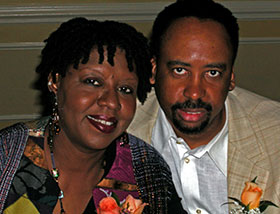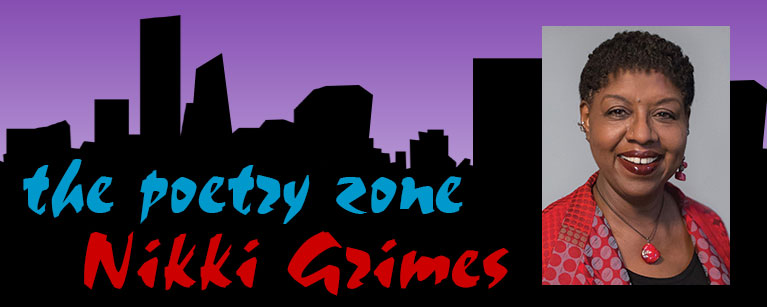 The Book that Almost Wasn’t: That could be the title of this book. The journey from concept to bookshelves is a bit of a saga. Some books are harder to birth than others, and Bessie was a book-baby in breach! I’ll explain.
The Book that Almost Wasn’t: That could be the title of this book. The journey from concept to bookshelves is a bit of a saga. Some books are harder to birth than others, and Bessie was a book-baby in breach! I’ll explain.
It seems like forever ago that then Orchard editor Melanie Kroupa asked me to think about writing a black biography. I told her not to get her hopes up, because historical books were not my forté. As far as I was concerned, when it came to biographies of black historical figures, the McKissacks had that subject matter sewn up. I didn’t feel I could really contribute anything of value to the genre. But I agreed to do a little research to see if there were a historical figure of particular interest to me. Enter Bessie Coleman.
Thumbing through an encyclopedia of African American History, I came across a paragraph or two about pilot and aerialist Elizabeth “Bessie” Coleman. A pilot from the barnstorming era, and the first licensed African American woman pilot at that, Bessie had my full attention.
My initial excitement was tempered, though. Surely there was already a book about her for young readers, right? Wrong. At that time, the only in-depth book about Bessie on the market was Queen Bess, an adult biography by Doris Rich. Once I knew that, I was off and running.
I told Melanie about my discovery and got the green light to write the book.
My first draft was a straight prose treatment of her story. It might have remained so, but as I dug in to work on the second draft, I got wind of two other Bessie manuscripts for young readers being shopped around. I didn’t know who had written them, but that was almost unimportant. My concern was that my own would no longer be the only children’s book about Bessie hitting store shelves.
I went to my editor and voiced my concern. “Do you still want me to write this book?” I asked her. “Yes,” she said. “Our book doesn’t have to be the only one, it just needs to be the best.”
Great. No pressure there!
I sat down for a long think. How could I write a biography that could potentially compete with at least two others on the same subject? What unique treatment could I offer that would make my book stand out? The answer was as simple as simile: poetry. I would write a biography in verse. But what shape would such a treatment take? This could not merely be a lose collection of poems. As a biography, it required more structure than that. I had no easy solutions, so I set aside the manuscript for a few weeks.
In recent years, I’d attend a few (too many) memorials. Each service was, of course unique in its own way. However, they all had something in common: with each, I was struck by the fact that I left the memorial with a much more rounded sense of the departed than I had when I walked in the door. And it made perfect sense. Every person who spoke shared stories about the loved one from a time or perspective to which I hadn’t been privy. Each knew the departed in a way no else had, and to hear each story was to receive another piece of that person’s puzzle. Taken together, the individual anecdotes spun the larger story of his or her life.
I’m not quite sure why the memory of those memorials surfaced when they did, but I realized the idea of a memorial would be a perfect jumping off place for my story about Bessie Coleman. With that in mind, I rolled up my proverbial sleeves and began the manuscript anew.
I identified the key figures in Bessie’s life through whom I would tell her story and dug in for a second round of research. Among other things, I studied flight manuals, interviewed female pilots, and sat in the cockpit of a replica of the plane Bessie flew to get the feel of it.
I’m not wild about research, per se, but Bessie’s story was so exhilarating, that I felt driven. I mean, here’s a woman who began life working in the cotton fields, and ended it as the first licensed African American pilot in the world. Then you throw in the birth of aviation, air circuses, and wing-walking—come on! How could I not be intrigued?
So, I pounded out manuscript number two, and turned it in. There were the usual round of edits and revisions, of course. Beyond these, there was a tug of war between my editor and myself. Her vision of the book was one of scant text, maybe four or five lines of text per spread, with lots of space for glorious illustrations. I, on the other hand, was driven by the needs of the story. I argued that the length of the text had to be determined by the number of words it took to tell that story. We went back and forth on this for awhile. Eventually, I went back through the manuscript and made a few judicious cuts, eliminating only those words that were not specifically germane to the story. Neither of us got entirely what we wanted, but we settled.
Then it was on to the selection of the illustrator. We found one fairly quickly (for us!) and we were set to go. Finally, I thought. This book is moving forward!
Not so much.
Melanie Kroupa and two other editors at Orchard announced they were leaving the company to set up shop elsewhere. The plan, as I understand it, was to take their projects with them. However, Orchard put the breaks on and took the trio to court. What did that mean for me? My story on Bessie was held captive for the next year while the legal wrangling ensued.
When the dust finally settled, my manuscript was still at Orchard and I had to wait until a new editor was assigned to the project. In other words, Bessie was still in limbo. The project remained that way for a while.

Three editors came and went rather quickly, though one stayed long enough to cancel the contract of the illustrator we’d originally signed. Two editors later, someone came on board and discussed possible illustrators with me. The name E.B. Lewis was raised and I jumped on it. “Yes! Yes!” I said. “Get him.” I knew he would be perfect for this project. His historical detail was impeccable and that would serve Bessie well. The downside was that he would not be available to begin for two years. More than three years had already passed since I began work on this story, and the idea of waiting two more years was grueling. Even so, I knew E.B. would get the story right, so I felt he was worth the wait. And he was.
Now, you’d think, at this point in the story, the future would be smooth sailing. But you would be wrong …
Stay tuned for Part II of Bessie’s story next week …



2 Responses
I loved this book. I read it a while back, and I didn’t remember who had illustrated it. I’ve since heard E.B. Lewis speak at an SCBWI conference in Miami and agree you couldn’t have gotten a better illustrator. I look forward to reading Part II of Bessie’s story.
P.S. Have you read THE SECRET WORLD OF WALTER ANDERSON, which was also illustrated by E.B. Lewis? It’s fantastic too.
That would drive me nuts!!! As usual, I love your book about Bessie. My former husband’s aunt was also a pilot. She flew Amelia Earhart’s route. I believe she was the first woman pilot to do so. Wish I knew where her picture was.